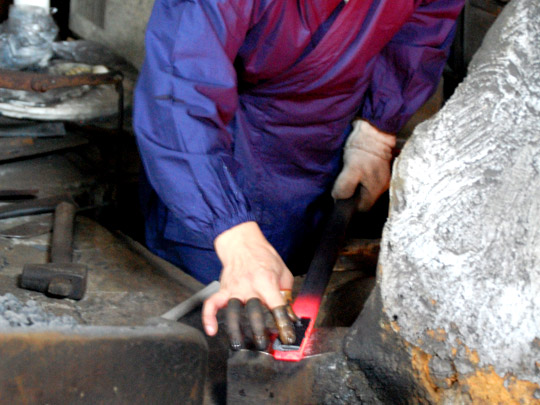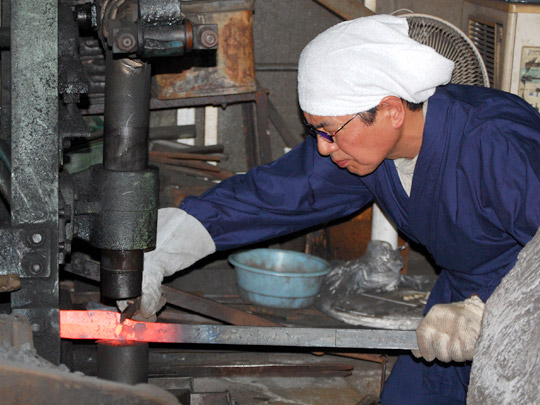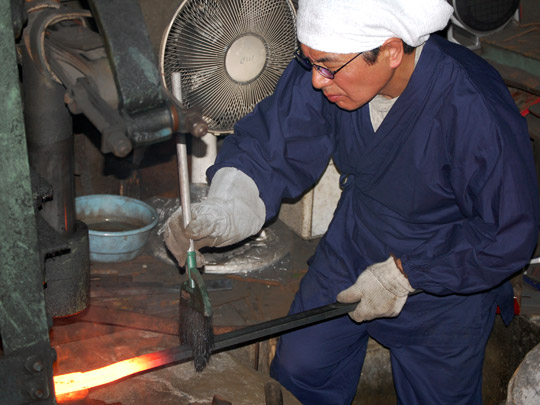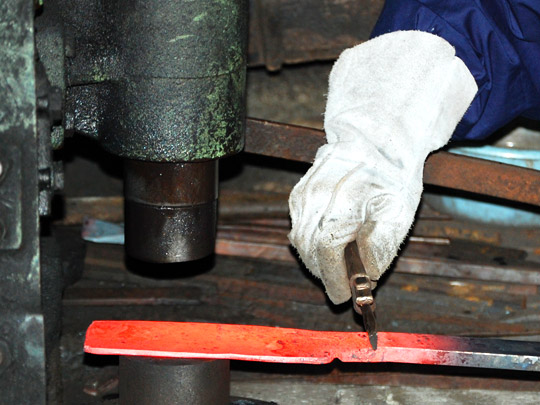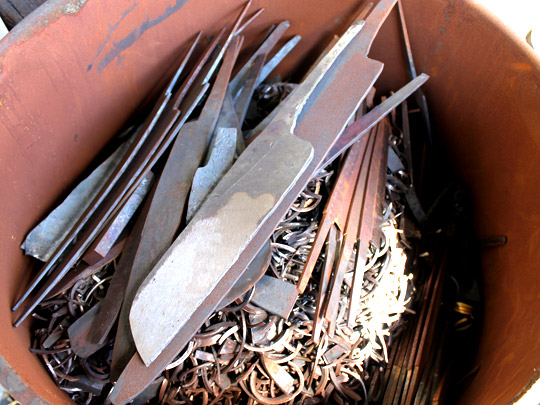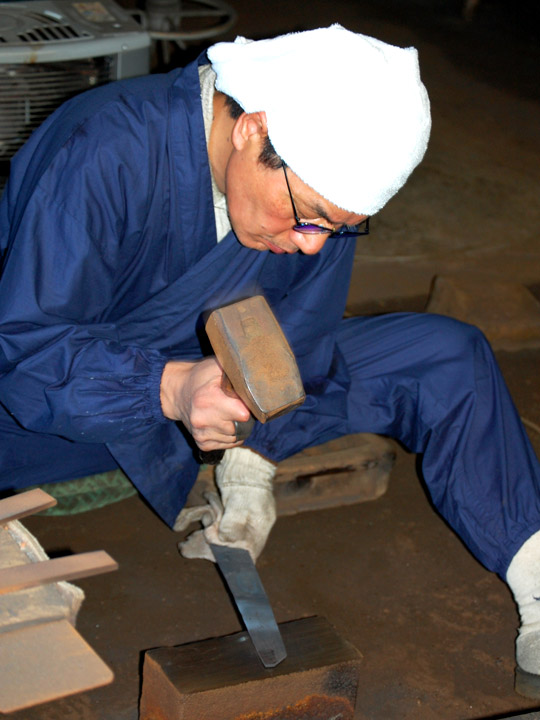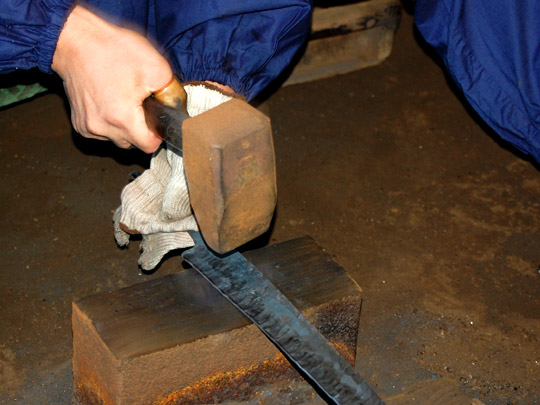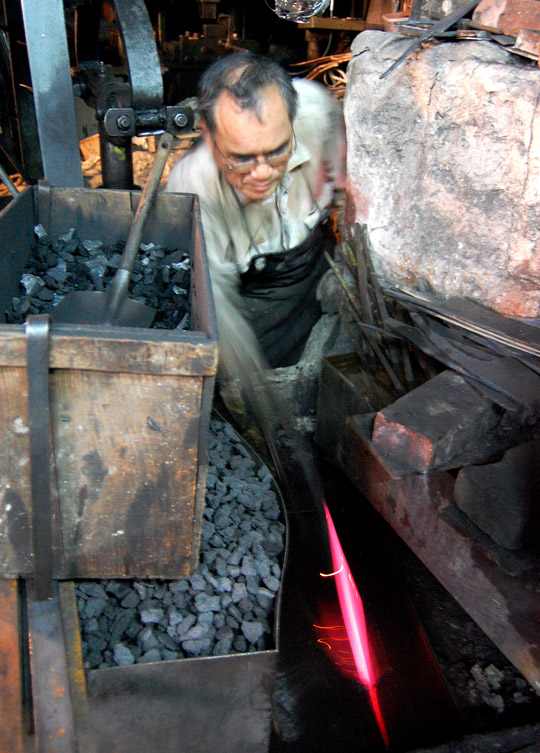Chubo is excited to take you inside the workshops of knife craftsman in Sakai, Japan, who are still making knives completely by hand. Each knife is forged and crafted in the tradition of generations of Japanese blacksmiths. This is the first of a two part series on the forging of these traditional knives.
Forging the Blade
Traditional Japanese knives, such as yanagi, usuba and deba are handmade in a multi-step process by several craftsmen over a period of several days. The first step in the process is forging the blade. A piece of soft iron is joined to a piece of carbon steel and the blade is repeatedly forged, hammered and shaped. The high carbon steel will become the blade’s edge and the soft iron becomes the body and spine of the knife. Using the soft iron for the body and spine reduces brittleness and makes sharpening the knife easier for users.
Craftsman Doi is joining the soft iron and carbon steel in preparation for hammering, forging and shaping the blade.
Craftsman Doi hand-shaping the blade gradually into its desired shape as an usuba knife.
It is essential to brush the blade with a wire brush during the forging and shaping to keep the blade dust free.
Craftsman Doi shaping an usuba knife.
Many of the tools used in the shaping, hammering and forging process have not changed for centuries.
Even with the most skilled blacksmiths, there are certain blades that don’t make the cut. These are discarded and recycled.
After each blade has been forged, shaped and cooled, it is hammered to further shape and strengthen the blade.
Further hammering and shaping
Yaki-Ire
After the hammering and forging, the blades are readied for the ‘yaki’ phase. The purpose of this process is to harden each blade to enable it to take on an edge. To prepare for yaki-ire, the furnace must be heated to precisely 720 degrees. This is judged and regulated completely by eye, based on the shade of red of the glowing coals.
To prepare for yaki-ire, each knife is coated with clay to ensure even heating. Each blade is heated, tempered and quenched in water to complete the process. The process of yaki-ire is extremely difficult and takes many years for blacksmiths to master. Even master blacksmiths with decades of experience do not forge every blade perfectly and only a percentage of these blades make it to market.
Usuba blades are covered in clay in preparation for ‘yaki-ire’
After removing the knife from the furnace, it is plunged in water to complete the ‘yaki-ire’ process.

